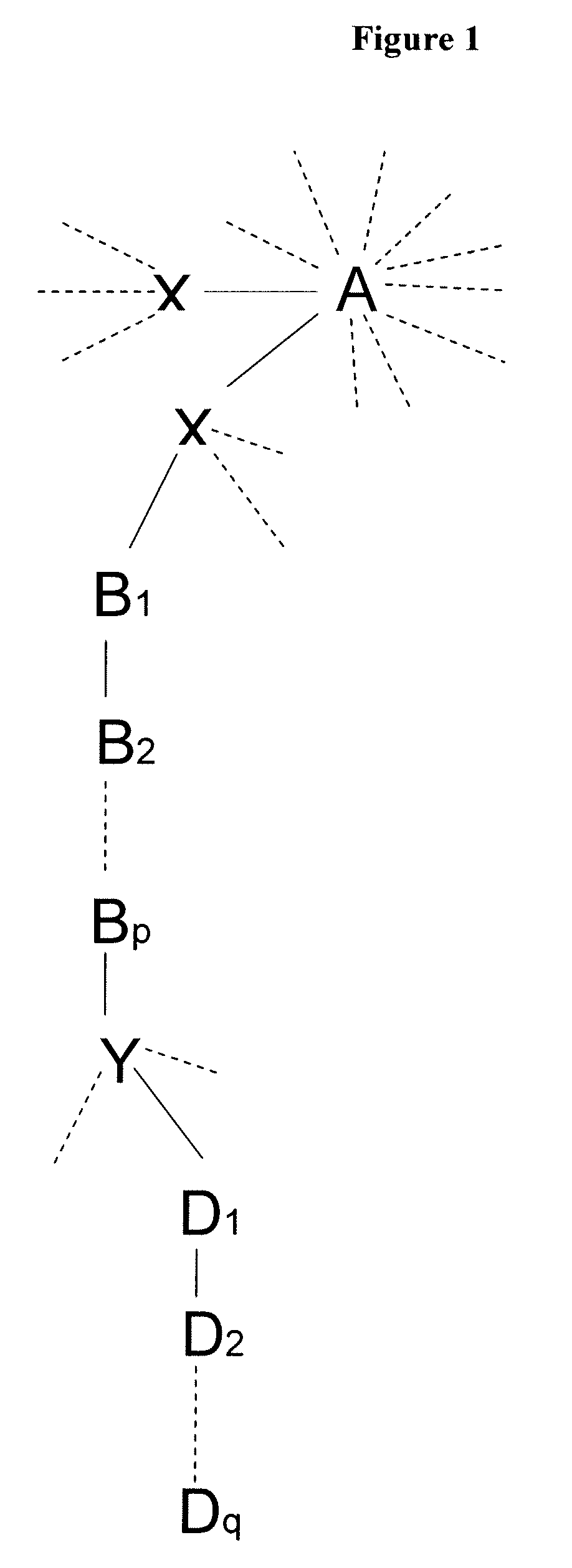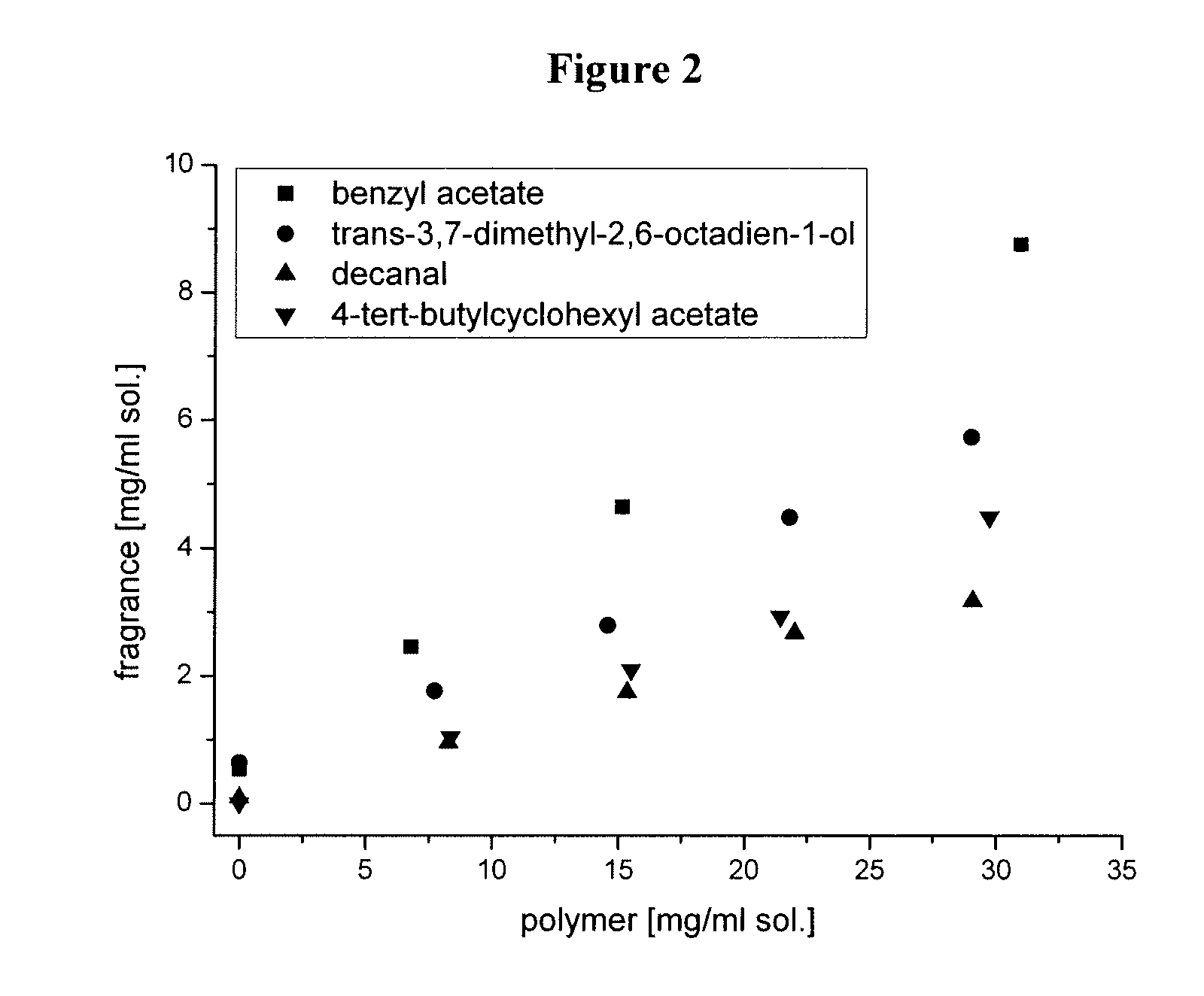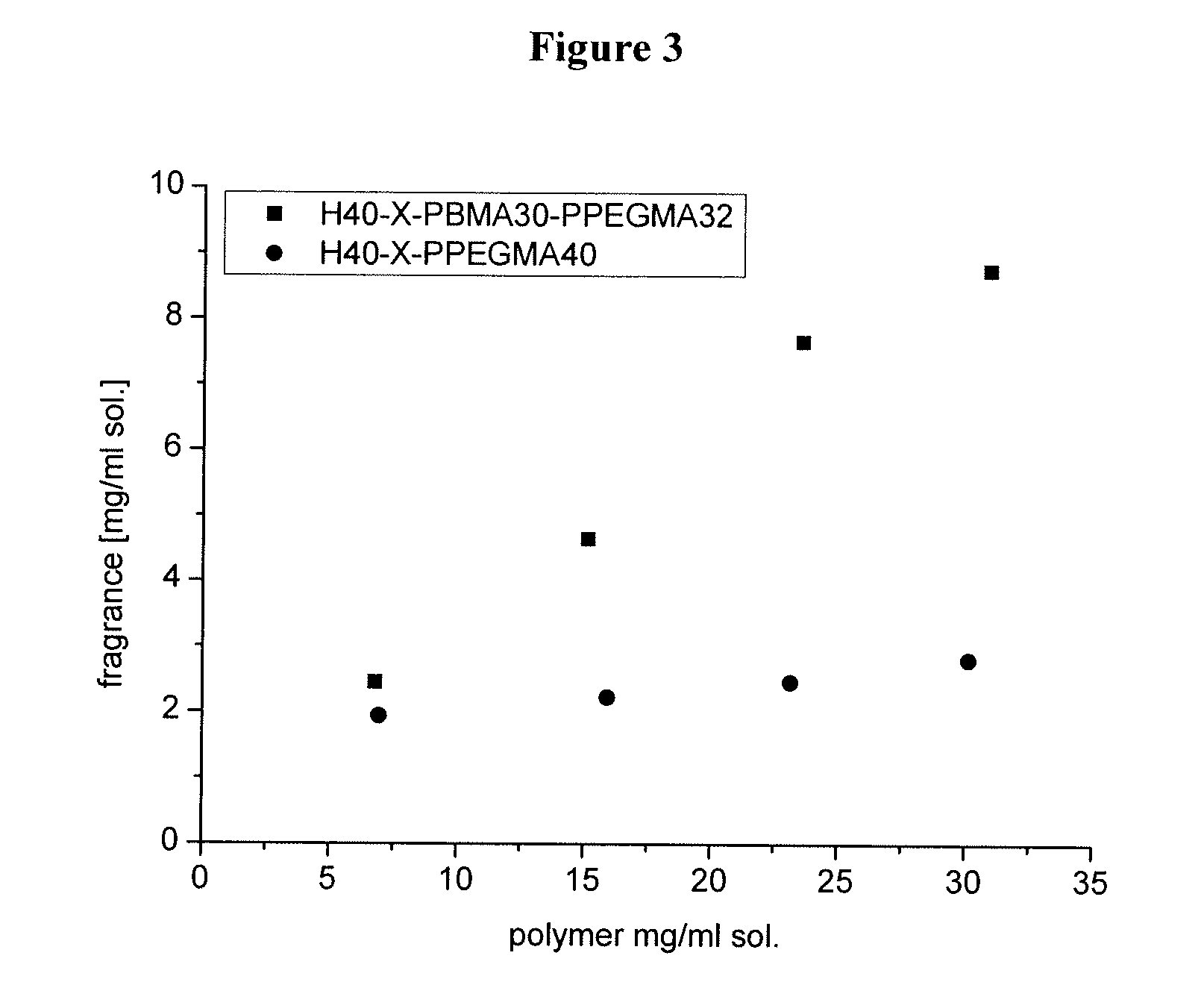Amphiphilic star block copolymers
a copolymer and amphiphilic technology, applied in the field of block copolymers, can solve the problems of poor amphiphilicity, poor amphiphilicity, and inconvenient use, and achieve the effect of good solubility or dispersibility
- Summary
- Abstract
- Description
- Claims
- Application Information
AI Technical Summary
Benefits of technology
Problems solved by technology
Method used
Image
Examples
example 1
Preparation of Amphiphilic Star Block Copolymers by a Two Step Ring-Opening and Atom Transfer Radical Polymerisation Process
[0124] A Boltorn® H40 HBP (origin: Perstorp, Sweden) was used as initiator for the ring-opening polymerisation of ε-caprolactone. Along with the Boltorn® H40 HBP itself, the resulting poly(ε-caprolactone) (PCL) blocks provide the lipophilic interior of the final many-arm star block copolymer. In order to graft hydrophilic blocks to the precursor, functional groups serving as initiators for ATRP, such as 2-bromoisobutyryl bromide, were introduced to the ends of the PCL arms (linker moiety Y). Subsequent polymerisation of monomers such as polyethylene glycol methacrylate (PEGMA), or tert-butyl acrylate (tert-BuA) give poly(polyethylene glycol methacrylate) (PPEGMA) and poly(tert-butyl acrylate) (Ptert-BuA), respectively. In the former case the outer shell is sufficiently hydrophilic to be dispersed in water, in the latter case removal of the tert-butyl ester pr...
example 2
Preparation of an Amphiphilic Star Block Copolymer by a Two Step Radical Atom Transfer Polymerisation Process
[0202] A Boltorn® H40 HBP was used to introduce functional groups capable of initiating ATRP directly onto the core. The lipophilic block B was built up via an initial ATRP step using a monomer such as methyl methacrylate (MMA) to give poly(methyl methacrylate) (PMMA) or n-butyl methacrylate (n-BuMA) to give poly(n-butyl methacrylate) (Pn-BuMA), respectively. A second ATRP step was used as in Example 1 to create the hydrophilic block D. For example, polymerisation of polyethylene glycol methacrylate (PEGMA) gives poly(polyethylene glycol methacrylate) (PPEGMA).
2.i Grafting of the Linker Moiety X onto the Hyperbranched Polymer A to Obtain H40-X
[0203] A solution of vacuum-dried Boltorn® H40 HBP (2.8 g) in 80 mL of dry THF, containing a total of 25 mmol of hydroxyl functions, was added to a solution of 4-(dimethylamino)pyridine (4.79 g, 39.3 mmol) and triethylamine (2.53 g, 3...
example 3
Encapsulation of a Lipophilic Dye Followed by UV Spectroscopy
[0243] The star block copolymer H40-X-(PMMA)10-(PPEGMA)8 (prepared as described in Example 2.iii) was used to encapsulate rubrene as a hydrophobic agent.
[0244] 5 mg of the lipophilic, water insoluble dye rubrene (origin: Sigma-Aldrich) were stirred with 50 mg of the amphiphilic star block copolymer. Then, 2.0 mL of water was added to the resulting mixture and stirring was continued until the polymer was dissolved. The remaining undissolved rubrene was removed by centrifugation. The reddish supernatant was investigated by UV / Vis spectroscopy, confirming the presence of rubrene in the aqueous polymer solution. In conclusion, the copolymer of the present invention effectively encapsulates rubrene.
[0245] The evaluation of the results of the UV spectroscopy was based on the absorption maxima for rubrene in aqueous polymer solution (538 nm; 501 nm; 333 nm) as compared to the absorption maxima for rubrene in heptane solution ...
PUM
 Login to View More
Login to View More Abstract
Description
Claims
Application Information
 Login to View More
Login to View More - R&D
- Intellectual Property
- Life Sciences
- Materials
- Tech Scout
- Unparalleled Data Quality
- Higher Quality Content
- 60% Fewer Hallucinations
Browse by: Latest US Patents, China's latest patents, Technical Efficacy Thesaurus, Application Domain, Technology Topic, Popular Technical Reports.
© 2025 PatSnap. All rights reserved.Legal|Privacy policy|Modern Slavery Act Transparency Statement|Sitemap|About US| Contact US: help@patsnap.com



